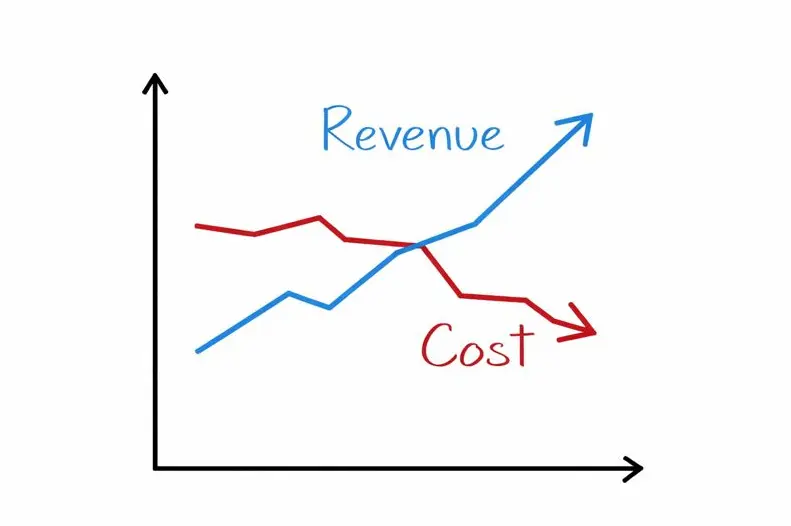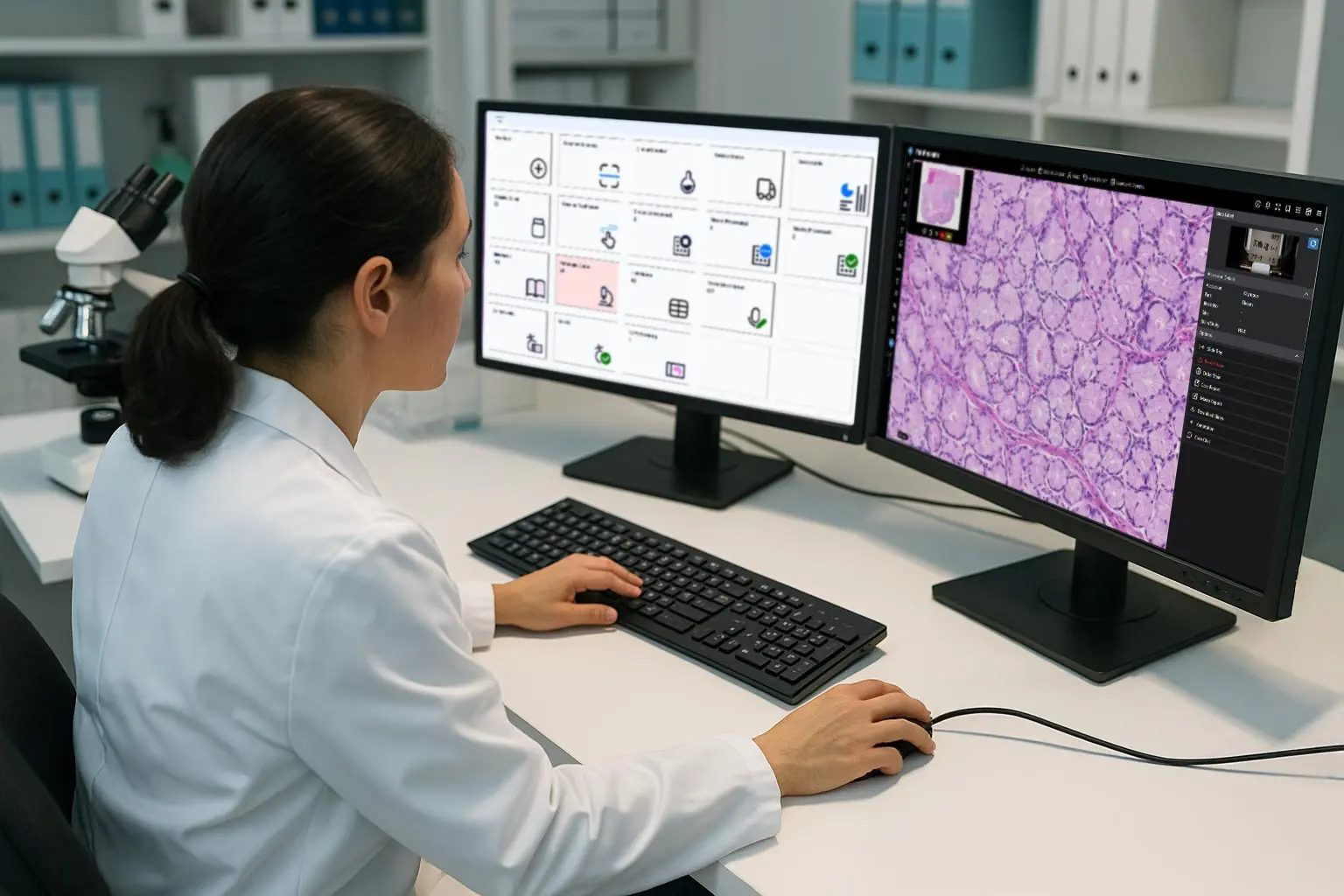Blog
LigoLab Customer Review - David Gardiner Talks About LigoLab's Adaptability and the Platform's Reporting and Distribution Engines
October 22, 2025
Editor’s Note: The following is a transcript of a video interview with LigoLab customer David Gardiner.
My name is David Gardiner, and I'm the Chief Medical Officer and owner of Animal Reference Pathology. My practice is a veterinary diagnostic lab that services clients in almost all 50 states. We're smaller than the larger labs, but we essentially provide reference laboratory services to veterinary clinics across the country.
That includes general practices, you know, the vet on the corner, as well as specialty hospitals that have a veterinary internist, oncologists, and so forth. The bulk of our business is anatomic pathology, but we do have a full spectrum of reference laboratory testing within our capabilities.
Discover More: The Role of Anatomic Pathology LIS Software in Optimizing Laboratory Workflow Management
The Search for the Best Laboratory Information System Software
We wanted to try and find a new LIS laboratory information system because we transitioned out of a larger lab into a smaller division that went out on its own, and there really was no optimal anatomic pathology LIS solution for veterinary medicine as we researched leading laboratory information system companies. They were either a patchwork of human pathology information systems, homegrown LIS systems, or lab information system applications that were extremely antiquated.
There were some LIS systems that interested us, but they didn’t provide a complete veterinary lab anatomic pathology LIS package. They were able to generate a report, but if you wanted to have the lab information system integrated with instrumentation, you had to involve third-party lab vendors.
We're small, and we didn't want to have to manage multiple lab vendors, so I looked in CAP Today, which puts out a periodic review of the best laboratory information system software. I went through every list and I called or emailed all the LIS vendors that were in the issue, and I asked them if they already had, or if they'd be willing, to work with us on a veterinary LIS software solution. Most of them just flat out said no, and some of them said maybe.
When I called LigoLab, they were the first ones who said, “Well, what would you need that's different?”
Discover More: The Benefits of a Modern Pathology Lab Management System
LigoLab’s Adaptable Laboratory Information System Software Solutions
I explained to them that we don't have just one species. We have multiple species, and within each species, there are multiple breeds. There are hundreds of breeds of dogs, and we have four genders. We have castrated animals and so forth. So there were some demographic changes that were going to be mandatory, but also just the ability to, throughout the evaluation process, understand that our needs were going to be similar to others, but also different.
I was really looking for somebody that would listen to us and be able to adapt their LIS lab system for our needs. It was a short list, and it became pretty clear in talking with most LIS vendors that there were groups that were trying to put us, a square peg, into a round hole. LigoLab was the one LIS company that felt like it didn't really have a square or a round hole defined, and its LIS system and anatomic pathology LIS module were highly adaptable.
White Paper: Vendor to Partner - How Aligning with Your LIS Provider Can Transform Your Lab
That's really what intrigued me the most, and then it just became a question of, okay, can the LIS company deliver? We took the initial plunge with the thought that this was going to be a really good long-term pathology lab management system for us.
Discover More: What You Need to Know Before Contracting with a Laboratory Information System (LIS) Company
With LigoLab’s Anatomic Pathology Software, the Price was Right!
One of the most advantageous things for us was that we were coming out of a larger lab, so we didn't have huge capital set aside for a major laboratory information system investment. The big LIS system vendors call for extremely large upfront cash payments, but LigoLab's structure for their fees was much more amenable to us. It allowed us to get a really top-notch LIS system solution in place. Not only was the cost structure important, but also how fast we could implement the new LIS software, because we were up against a time crunch and had to be able to generate a report for our clients with a short lead time.
Discover More: How Modern Laboratories Produce and Distribute LIS System Reports
It was extremely stressful, but it ended up being very simple. We got the initial LIS system up for the majority of the work we needed to do, and one day we were doing reports in the old LIS system, and the next day we switched to LigoLab’s anatomic pathology LIS solution with very little overlap. All things considered, it was a mostly painless transition.
No LIS system transfer or change is painless, but I've heard horror stories, and I think we were pretty fortunate to get off the ground as a small business with a new lab information system after coming out from a really old LIS lab solution that was dramatically different in terms of functionality and capabilities.
It was really important for me to be able to create a report that represented the time and effort I put into it, that my client, the vet, would be able to hand to the pet owner and say, “This is why we sent it to the lab, and here are the results. Here's your dog's tumor. This is why we took it off, and this is why we need to do the following treatments.”
Discover More: Streamline Laboratory Workflow Management With Customized Lab Reports & Unmatched Client Support
Less Paperwork and More LIS System Customization
I really wanted to elevate the reporting professionalism in our lab, above what's out there in the majority of laboratories, and the configurations that were made available to us in the LigoLab platform really made that possible. From a very customized professional looking report with our logo on it, to easy ways for pathologists to include photo micrographs in the report. I'm proud to say that we were one of the first labs in veterinary medicine to start incorporating photo micrographs in reports, and that subsequently many of the bigger labs have been trying to catch up to us.
Because of LigoLab, my reports are the most professional in the industry.
It was also really important for me to minimize the amount of paperwork or emails that were being transmitted between pathologists and support staff to complete a case, and LigoLab really had an efficient way for us to see where all the blocks were, all the slides were, how to request them, and how to communicate with our histology lab that certain specimens and stains had been changed, added on, and so forth. As a small lab, it was important for us to be able to have that level of transparency because we didn't have the time or resources to have an extensive manual and paperwork system. We were competing with the biggest guys in the market, and we had to be as efficient as possible.
Industry Insights: How Modern LIS Systems Empower Labs Through Configurable Reporting, Seamless Integration, and True Partnership
An Advanced Laboratory Information System Backed by Responsive Support
Anytime you have a laboratory information system, you're going to need to be able to call someone to say, “How do I do X, Y, Z, or I'm experiencing this issue, how do I get through it?”
The 1-800 number (1-800-LIGO-LAB) has been somewhat of a lifeline for us, because we're small and we don't have extensive IT resources in-house. I pick up the phone quite often and call and say, “I'm in the case. I need to know how to do this. Can you help me?” The response has generally been really quick and efficient.
Discover More: Stability and Performance - The Two Most Important Aspects of a Modern Laboratory Operation
Working with the LIS system support staff has been a helpful and pleasant experience. They don’t give you explanations and instructions that are way over your head. They've always been willing to dumb it down enough to help me understand, “Okay, I know what you're talking about now, and I can achieve what I need to.”
Sometimes they'll do it for me, and sometimes I'm more interested in learning how to do it myself, so the next time it happens, I can take care of it myself. They've been really helpful in playing to either of those scenarios, whether I want to learn how to do it, or I just want to say, “I don't have time for it today, can you just fix this problem?”
Discover More: LigoLab’s Approach to LIS Software Support & Training
Customized LIS System Reporting with Far Fewer Clicks
My favorite feature in LigoLab is hands down how easy it is to capture images in our reports. I'm a pathologist, which almost means by definition, I'm a nerd, and so it was really important for me to produce a lab report that was just the coolest one in the market, but not at the cost of being a huge time sink for our pathologists. If adding pictures meant they became 50 percent slower doing their reports, it wasn't a feasible LIS lab solution.
We've got it dialed in now to where it's just a couple of clicks, and we can capture very nice high resolution images and annotate them, and add a small caption with minimal effort. To me, that’s the coolest feature in LigoLab.
Discover More: Customizing LIS Systems for Specialized Laboratory Needs
The whole process of accessioning and grossing with the LIS pathology module has allowed us to be much more efficient than what I had experienced in larger labs, labs that didn’t have such a comprehensive lab information system that required more specimen processors, more grossing techs, and more histotechs to really bring the lab workflow through all the way to a pathologist's desk.
Efficiency gains have really been at the histology and grossing level based on my previous experience. The other thing that is great is, even though we're small, I can see what we're capable of with our LigoLab partnership. As the owner of the business, it's important to know that something I've invested in doesn't have a limitation that's going to prevent the business from getting to the next phase of growth.
Discover More: Best LIS Software - Maximize Growth With Cutting Edge Pathology Lab Management Software
We honestly use very little of the ultimate functionality packed within the LigoLab platform, but it's comforting to know that as we grow and our needs expand and change, the existing laboratory information system can adapt. We can enter those new areas of expansion without having to change our LIS lab solution or do some dramatic in-house manipulation to make it feasible.
Discover More: LigoLab Informatics Platform - Uniquely Designed to Deliver Maximum Value
David’s story shows what’s possible with the right partner.
Schedule a quick demo to see how LigoLab can support your veterinary lab’s growth.






